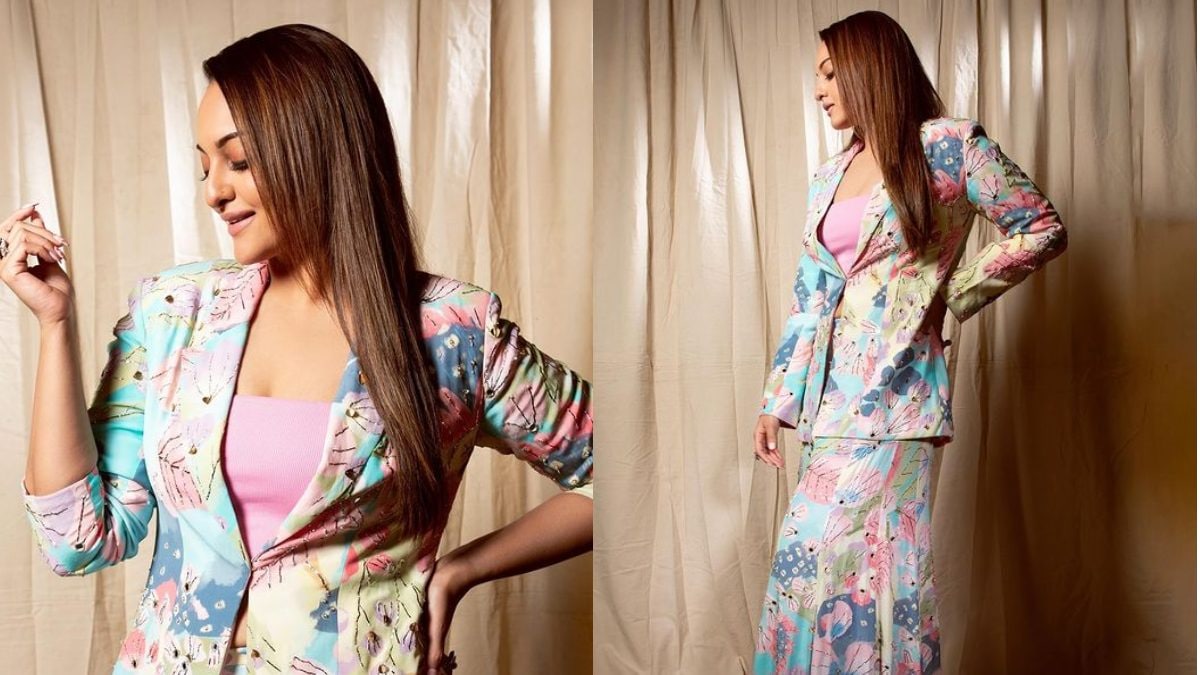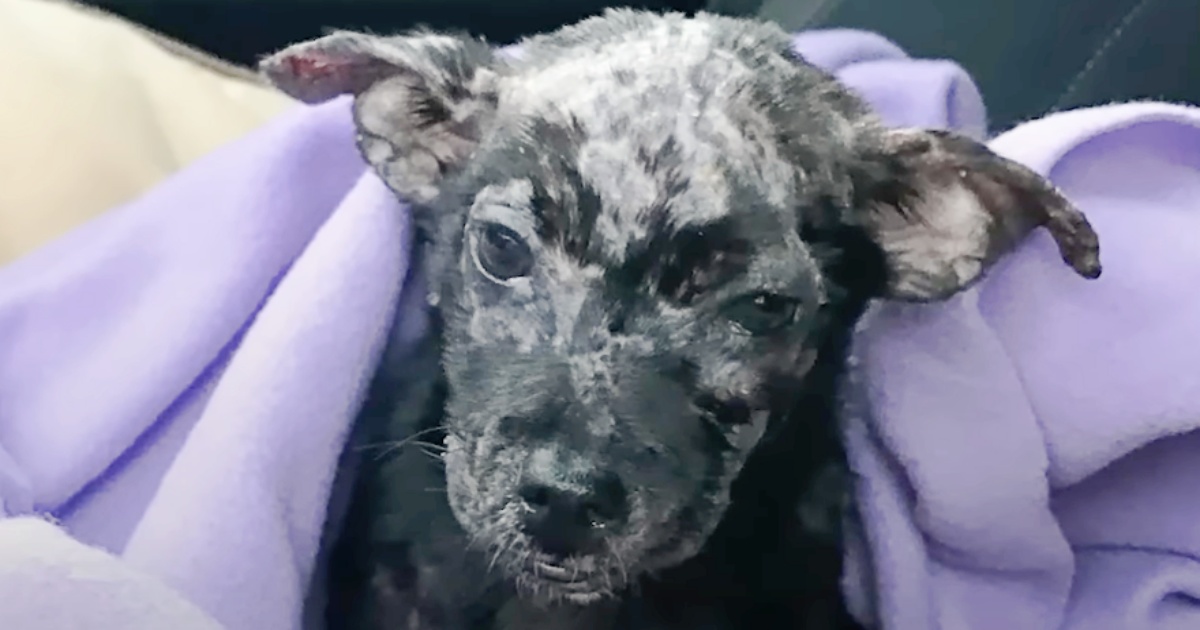Whippets, known for their sleek form and incredible speed, are not just athletic marvels but also come in a delightful array of coat colors and patterns that enhance their elegant appearance. This medium-sized sighthound breed, which originated as a hunting dog, carries a genetic palette that produces a stunning variety of colors. Each color not only adds to the visual appeal of the Whippet but also tells a story of genetics and breed history. From the classic brindle to the striking blue, Whippets’ coats reflect a rich diversity. Here, we explore seven stunning color variations of Whippets, delving into the charm and distinctiveness of each.
1. Brindle
Brindle Whippets feature a beautiful striped pattern, reminiscent of a tiger’s coat, which ranges from subtle to highly pronounced. The base color of these stripes can vary from gold to dark brown, set against a lighter background. This pattern provides an excellent camouflage, a trait that likely helped their ancestors in hunting and survival. Brindles are particularly prized for their unique appearance, which stands out in both casual settings and competitive shows. The interplay of shadow and color in their coat highlights the Whippet’s muscular, streamlined body, making it a favorite among many enthusiasts.
2. Black
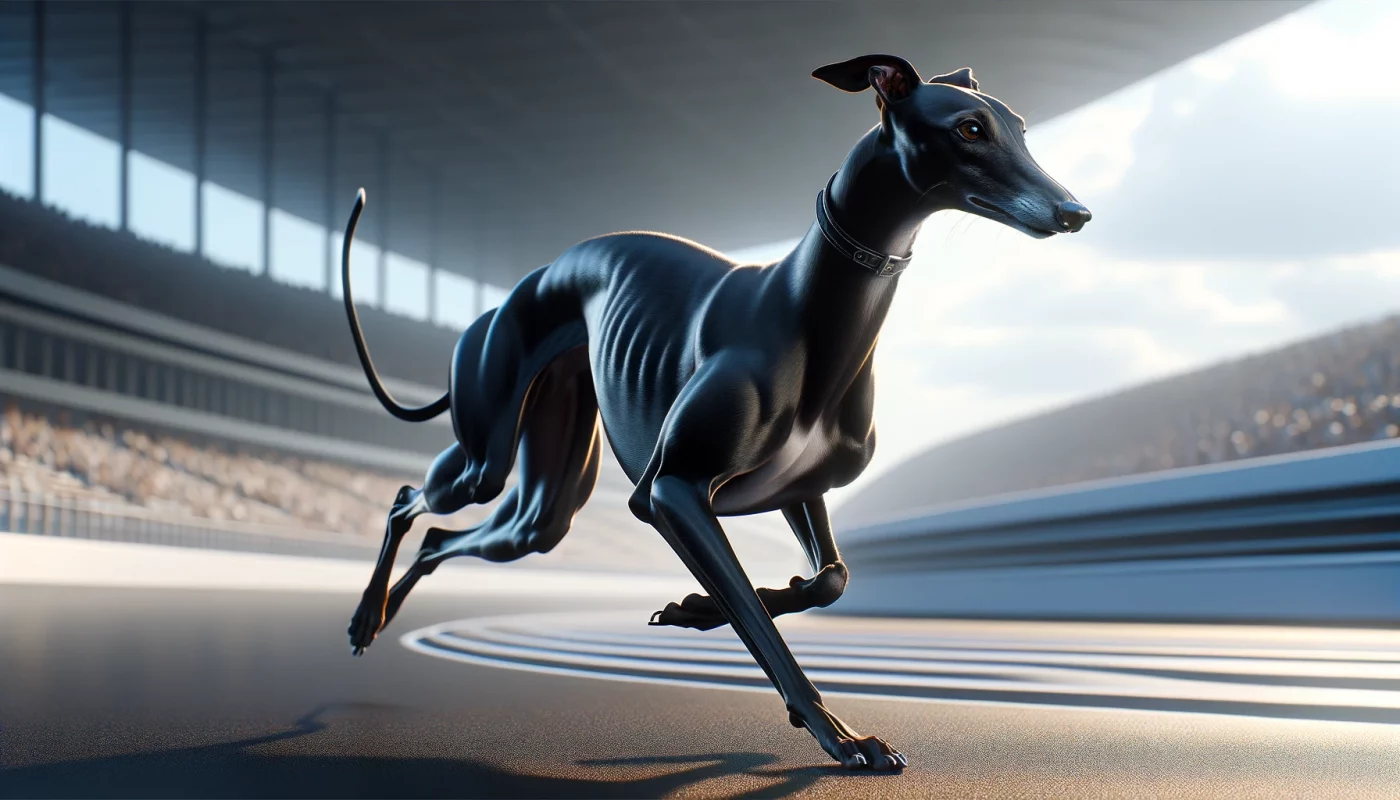
Black Whippets are striking with their glossy, jet-black coats that shine in the sunlight. This solid coloring is both elegant and dramatic, emphasizing the sleek lines of the breed’s body. The black coat, which absorbs light, gives these Whippets a silhouette that accentuates their graceful movements. Although black is a common color in many dog breeds, in Whippets, it brings out a sophisticated allure that complements their dignified demeanor. This color variation is straightforward genetically, resulting from a dominant gene that expresses the rich, dark hue fully.
3. Blue
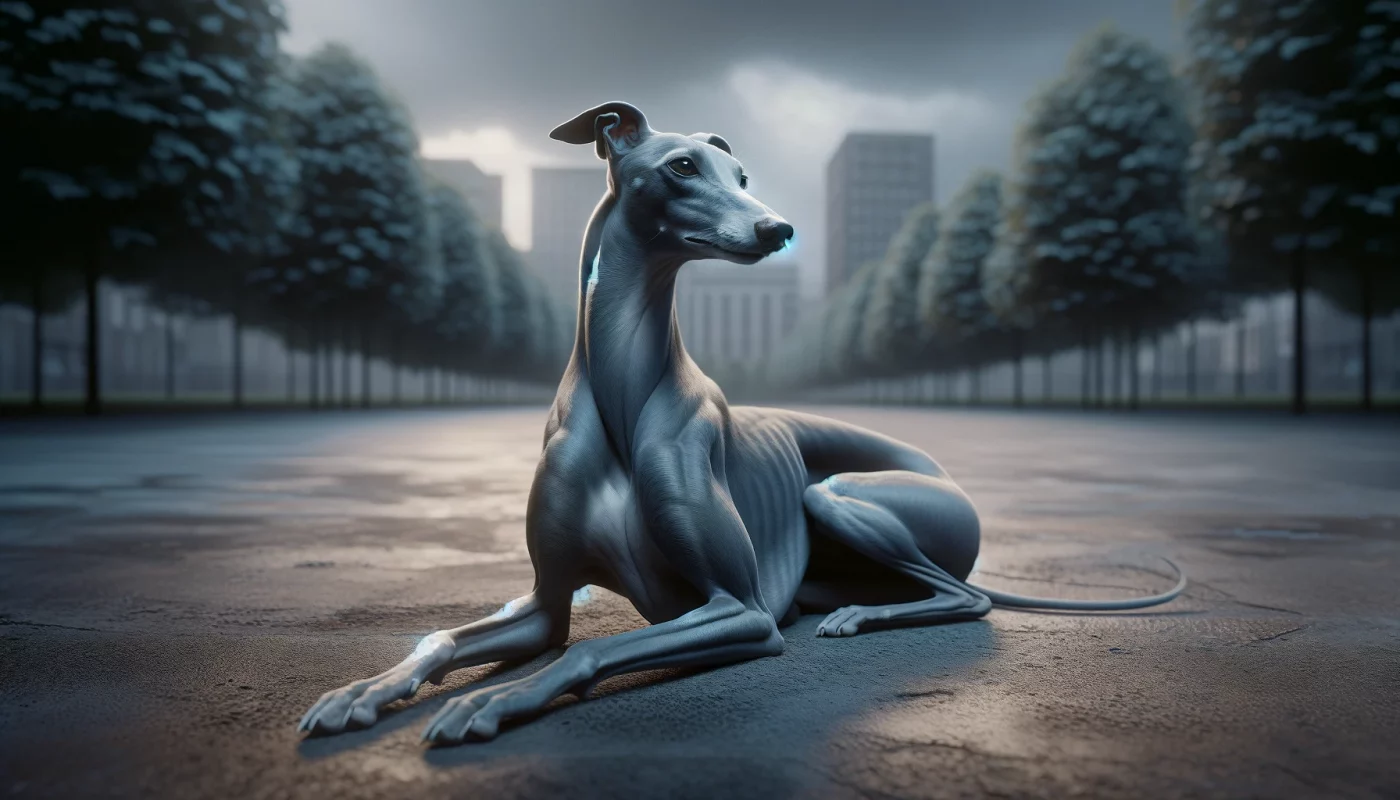
The blue Whippet is not truly blue but has a dilute black coat that appears as a stunning smokey gray. This rare and captivating color variation results from a specific dilution gene that affects the black pigment. Blue Whippets often have a mystical appearance, with their soft, muted gray coats that give them an almost ethereal look. This color can vary from a light silvery shade to a deeper slate, often accompanied by matching gray noses and eye rims, enhancing their gentle expression.
4. Fawn

Fawn Whippets range from light, sandy hues to rich, golden tones, embodying a warm and inviting appearance. This color is often uniform across the body but can include a slightly darker shading along the back and ears. The fawn color provides a neutral yet appealing backdrop that highlights the Whippet’s expressive eyes and slender face. It’s a popular color for its softness and versatility, easily blending into various environments whether the dog is at rest or in motion.
5. Cream

Cream Whippets have a pale, off-white coat that exudes a subtle elegance. This lighter variation often appears almost white under bright light but maintains a warm cream tone upon closer inspection. The cream color is especially stunning as it showcases the Whippet’s refined features without the distraction of darker markings. These Whippets are less common and can sometimes be mistaken for white, though their coat retains a distinct warmth in its hue.
6. Parti-color
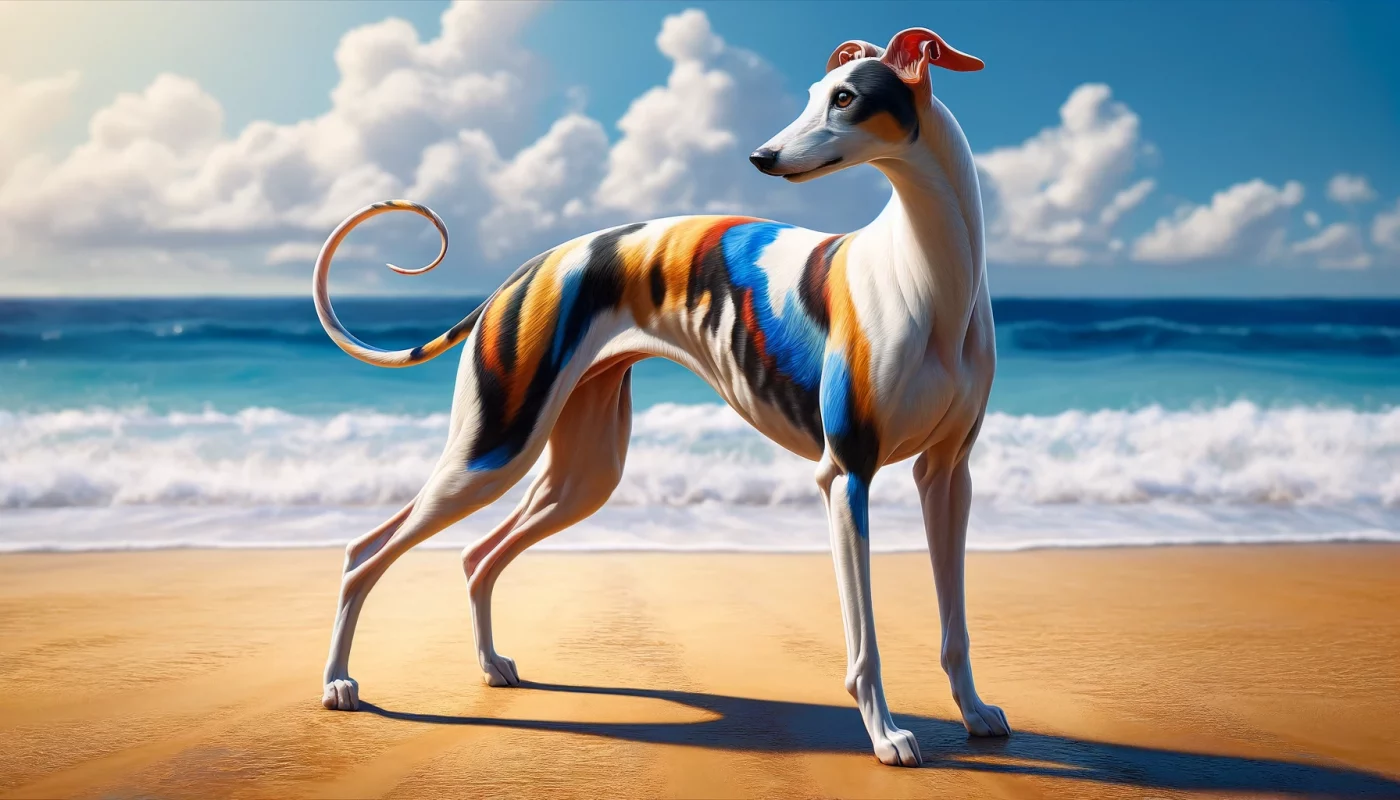
Parti-colored Whippets are those with coats combining white and any other color in distinct patches. This variation is particularly eye-catching, with the sharp contrast between the white areas and colored patches. Parti-color can include any of the other colors mentioned, arranged in a variety of patterns that are unique to each dog. This color type often adds a playful, vibrant quality to the Whippet’s appearance, reflecting a spirited personality.
7. White
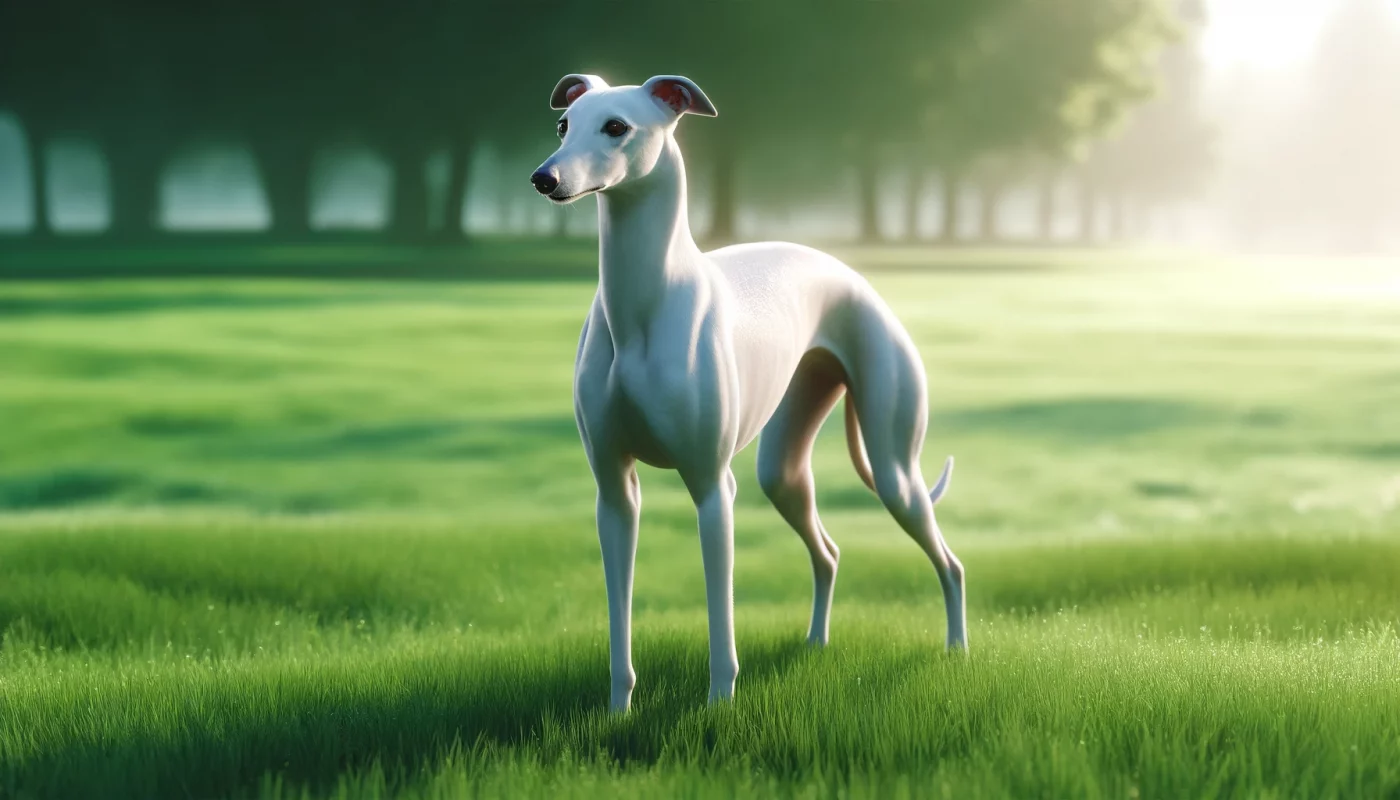
White Whippets possess a pure, snowy coat that is both striking and somewhat rare. The white coat can be a result of a genetic lack of pigmentation, which gives these dogs a bold, clean look that is hard to miss. While stunning, white Whippets may require more care to keep their coats clean and pristine. They also may be more prone to skin issues due to their sensitive, unpigmented skin, which demands vigilant protection from the sun.
The color variations of the Whippet breed add significantly to its allure, making each dog uniquely beautiful. Whether adorned in the dramatic stripes of a brindle, the mystical shades of blue, or the striking simplicity of white, each color variation brings out a different facet of the breed’s graceful anatomy and spirited temperament. These colors not only delight the eye but also serve to highlight the Whippet’s swift and agile nature, making them a perennial favorite among dog lovers and connoisseurs. Whippets, regardless of their coat color, continue to charm and captivate with their elegant profiles and swift, smooth movements, embodying both beauty and agility in every shade.
Frequently Asked Questions About Whippets Colors
1. What are the most common colors found in Whippets?
Whippets can be found in a wide range of colors, but the most common are fawn, black, blue, and brindle. Fawn Whippets typically have a warm, sandy color that can range from light to rich golden. Black Whippets are known for their sleek, jet-black coats, which give them a striking appearance. Blue Whippets have a unique smoky gray color due to a dilution gene affecting the black pigment. Brindle Whippets display a beautiful striped pattern, which varies from subtle to very pronounced, usually set against a lighter background. These colors are all highly favored for their distinctiveness and the way they highlight the breed’s elegant features.
2. Are there any rare colors in Whippets?
While Whippets come in a variety of common colors, there are several that are considered rare. Among these, true blue, cream, and solid white are particularly uncommon. Blue Whippets have a dilute black coat that appears as a stunning smoky gray, and while not extremely rare, they are less commonly seen than other colors. Cream Whippets, which have a pale, off-white coat, are also quite rare and prized for their subtle elegance. Solid white Whippets, which lack any pigmentation in their coat, are another rare color. These Whippets often have striking appearances due to their pure, snowy coats.
3. Can Whippets be multi-colored?
Yes, Whippets can indeed be multi-colored. One of the most striking multi-colored variations is the parti-color, which includes white and any other color in distinct patches. This pattern can incorporate any standard color, such as black, blue, brindle, or fawn, in unique arrangements against a white background. Parti-color Whippets are particularly eye-catching because of the vivid contrast between the colored patches and the white areas. Each parti-color Whippet has a unique pattern, making them quite distinctive among their breed.
4. Do Whippets’ colors change as they age?
The color of a Whippet’s coat does not change significantly as they age, but some minor changes can occur. Puppies may darken or lighten as they develop their adult coat. For example, a blue Whippet may appear almost black at birth and lighten over time. Similarly, brindle patterns can become more pronounced or slightly fade depending on the individual dog. However, the basic color will remain the same throughout the dog’s life, with only subtle variations in hue and pattern intensity.
5. How does coat color affect a Whippet’s health?
Generally, coat color does not affect a Whippet’s health. However, Whippets with lighter colors, such as white or cream, may have more sensitive skin, which can lead to sunburn and other skin conditions if not properly protected from excessive sun exposure. It’s important for owners of light-colored Whippets to use sunscreen or protective clothing when their pets are outdoors for extended periods. Otherwise, the pigmentation, or lack thereof, in a Whippet’s coat has no direct impact on their overall health.
6. What is the genetic basis for Whippets’ coat colors?
The genetics of Whippets’ coat colors involve several genes that control the distribution and type of pigment in the coat. The primary pigments are eumelanin (black) and pheomelanin (red), which can vary in intensity and distribution due to different genetic factors. For example, the B gene determines whether a Whippet will have a black or brown coat, while the D gene affects dilution, causing colors like blue or cream. Brindle and parti-color patterns are influenced by other specific genes that affect how these pigments are striped or patched. Understanding these genetic basics can help breeders and owners predict the color of puppies.
7. Are certain colors or patterns more dominant in Whippets?
In Whippets, certain colors and patterns are genetically more dominant than others. For instance, the black coat color is dominant over brown, meaning that it takes precedence when it comes to puppy coloration if one parent is black. Similarly, solid colors are generally dominant over lighter and diluted colors like blue and cream. Patterns such as brindle are also dominant over solid colors, which means that a puppy is more likely to be brindle if one of the parents exhibits this pattern.
8. Can Whippets have blue eyes?
Blue eyes in Whippets are rare and usually only appear in those with dilute coat colors, such as blue or cream, due to the same dilution gene that affects their coat pigment. However, blue eyes are much less common than the blue coat color itself and are not typically associated with standard coat colors. In most cases, Whippets have dark-colored eyes that better match their coat colors, unless affected by specific genetic variations that lead to lighter eye colors.
9. How do breed standards affect the acceptability of certain colors?
Breed standards for Whippets specify acceptable colors and patterns, which can vary slightly by registering body. Generally, all colors are acceptable in many major kennel clubs, but the way these colors are presented—such as in patches or mixed patterns—can affect a Whippet’s success in the show ring. For example, while parti-color is accepted, it might be less preferred compared to more uniform coat patterns. Breed standards aim to maintain the quality and appearance typical of the breed, and adherence to these standards ensures the breed’s characteristics are preserved.
10. What color Whippets are most popular in dog shows?
In dog shows, fawn and black Whippets tend to be very popular due to their striking appearance and the way these colors highlight the breed’s sleek lines and athletic build. Brindle Whippets are also favored for their unique and eye-catching patterns. Judges often look for coat colors and patterns that are vivid, clear, and well-defined, as these features best display the Whippet’s elegant contours and graceful demeanor.


